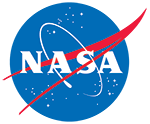
ATLAS/ICESat-2 L3A Along Track Inland Surface Water Data, Version 7
Data set id:
ATL13
DOI: 10.5067/ATLAS/ATL13.007
This is the most recent version of these data.
Version Summary
Version Summary
-Introduced parameters to allow for limiting of mode identification to above a certain depth to avoid bright subsurface signal to overwhelm local surface mode.
-Reduced sseg signal photon aggregation requirement for small lake/reservoirs, removed instrument effects from all analysis based on photon quality flag, and refined long segment bathymetry results for each member short segment based on its individual photon distribution.
-Made mirroring criteria water body type dependent & added apply_mirror parameter to control which types undergo mirroring processing.
-Added minimum number of photons required where downscaling long segment bathymetry to short segment scale.
-Added sseg_length and sseg_dist_from_eq to output
-Reversed 0/1 on/off assignments used for apply_mirror and limit_hist_depth arrays to match convention used for previous parameters.
-Added an improved methodology for identifying bathymetry that couples density thresholds with examination of photon distribution in the water column, controllable by water body type.
-Added apparent standard deviation to the non-anomalous short segment output.
-Updated min mirror cnt for coastal water bodies.
-Reduced sseg signal photon aggregation requirement for small lake/reservoirs, removed instrument effects from all analysis based on photon quality flag, and refined long segment bathymetry results for each member short segment based on its individual photon distribution.
-Made mirroring criteria water body type dependent & added apply_mirror parameter to control which types undergo mirroring processing.
-Added minimum number of photons required where downscaling long segment bathymetry to short segment scale.
-Added sseg_length and sseg_dist_from_eq to output
-Reversed 0/1 on/off assignments used for apply_mirror and limit_hist_depth arrays to match convention used for previous parameters.
-Added an improved methodology for identifying bathymetry that couples density thresholds with examination of photon distribution in the water column, controllable by water body type.
-Added apparent standard deviation to the non-anomalous short segment output.
-Updated min mirror cnt for coastal water bodies.
Overview
ATL13 provides along-track surface water products for inland water bodies, defined as lakes, reservoirs, bays, estuaries, rivers, and a 7 km near-shore buffer. Data parameters include surface water height statistics and related parameters including significant wave height, transect slope, subsurface signal attenuation, and shallow water bathymetry. Water surface heights are provided as both orthometric height and height referencing the WGS84 ellipsoid. ATL13 is also used to produce the ATLAS/ICESat-2 L3B Mean Inland Surface Water Data product (ATL22).
Parameter(s):
SURFACE WATER FEATURES
Platform(s):
ICESat-2
Sensor(s):
ATLAS
Data Format(s):
HDF5
Temporal Coverage:
- 13 October 2018 to present
Temporal Resolution:
- 91 day
Spatial Resolution:
- Not Specified
Spatial Reference System(s):
- WGS 84EPSG:4326
Spatial Coverage:
- N:88S:-88E:180W:-180
Blue outlined yellow areas on the map below indicate the spatial coverage for this data set.
Data Access & Tools
A free NASA Earthdata Login account is required to access these data. Learn More
Documentation
User Guide
ATBDs
General Resources
Product Specification Documents
Help Articles
General Questions & FAQs
This article covers frequently asked questions about the NASA NSIDC DAAC's Earthdata cloud migration project and what it means to data users.
This short article describes the customization services available for ICESat-2 data using Earthdata Search.
How to Articles
Many NSIDC DAAC data sets can be accessed using NSIDC DAAC's Data Access Tool. This tool provides the ability to search and filter data with spatial and temporal constraints using a map-based interface.Users have the option to:
This quickstart guide will walk you through the essential steps to start using the Harmony API to request subsetted files with specific spatial and temporal filters applied for select data sets.
To convert HDF5 files into binary format you will need to use the h5dump utility, which is part of the HDF5 distribution available from the HDF Group. How you install HDF5 depends on your operating system.
Learn the basic steps for using OpenAltimetry to browse and download ICESat-2 data products.
The NASA Earthdata Cloud is the NASA cloud-based archive of Earth observations. It is hosted by Amazon Web Services (AWS). Learn how to find and access NSIDC DAAC data directly in the cloud.
This article highlights the NSIDC DAAC data sets available with customization options and outlines a workflow for searching, ordering, and customizing data in NASA Earthdata Search. This approach is ideal for users who want to download data to their local machine.